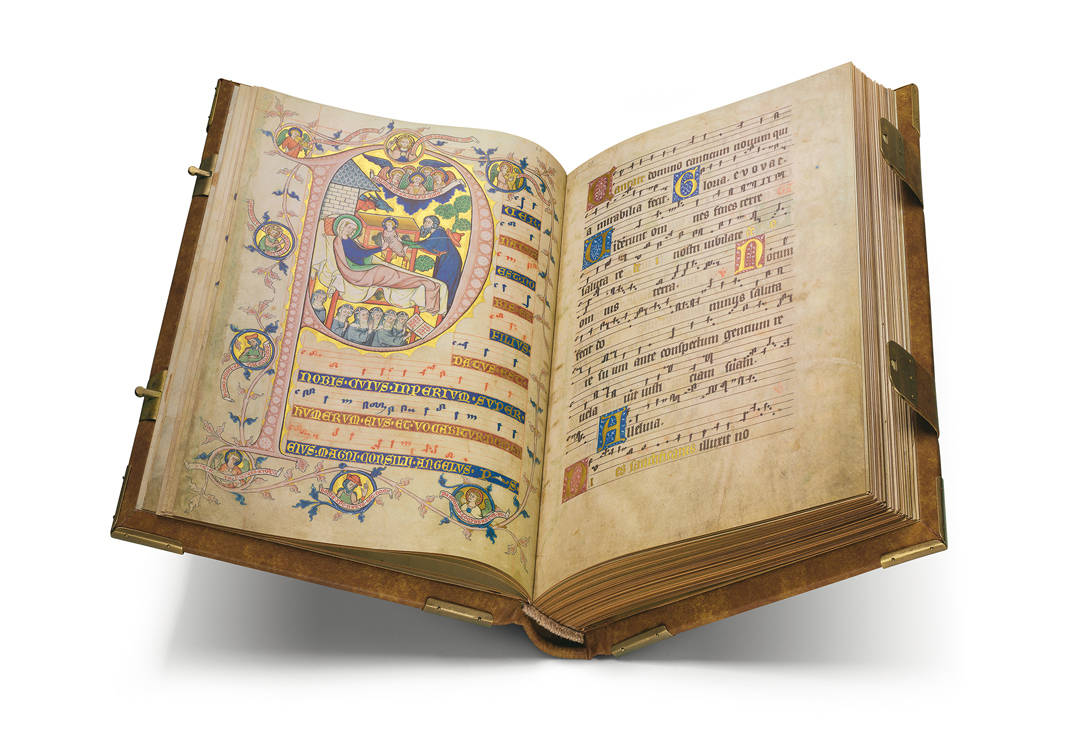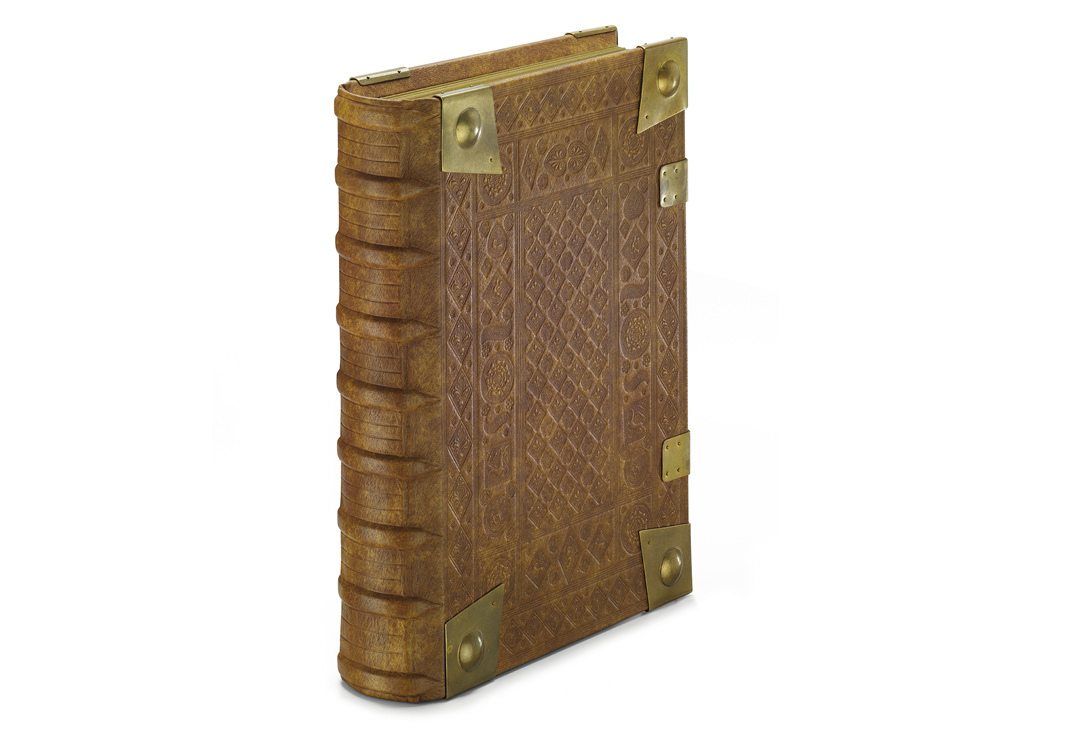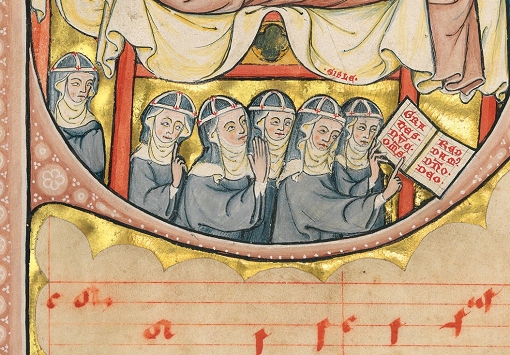The Golden Gradual of Gisela of Kerssenbrock
The Splendour of German Gothic Book Illumination
“Bearing witness to the excellent quality of German Gothic book illumination, the Codex Gisle is indeed unique to our area. The richly decorated initials of the codex clearly demonstrate the high standard set for monastic chants […]. With the edition of a facsimile by Quaternio Editions Lucerne, this treasure has been recovered and placed alongside the best European works of art.” (Hermann Queckenstedt, Director of the Diocesan Museum, Osnabrück)
Codex Gisle
The Golden Gradual of Gisela of Kerssenbrock: The Manuscript
A Masterpiece of German Gothic
The Golden Gradual of Gisela of Kerssenbrock is the most beautiful manuscript made in Lower Saxony-Westphalia in the period between 1250 and 1400. Its outstanding quality is based on the wealth and elegance of the initials often elaborated to incorporate veritable miniatures. Especially surprising are a number of unusual motifs, like the presentation of the Christ Child by Joseph in the initial depicting the Nativity. Sparkling burnished gold was generously applied to the backgrounds and also to the script. The great number of historiated initials is certainly exceptional for a Gothic gradual. The marvellous illustrations inserted at Christmas and Easter create a visual experience of the chants sung at Mass.
Hymns in Praise of God
The Golden Gradual of Gisela von Kerssenbrock comprises about 1500 Gregorian chants, thereby more than doubling the regular repertory of other Graduals of the time. The Gradual compiles all of the musical parts which are sung at Mass and celebrated daily throughout the church year. It includes the parts not read by the priest but sung by a choir. Singing choral refrains between Psalm verses that praise the word of God was an essential part of the Christian liturgy, and hence a central element in the celebration of the Mass by religious orders. In the convent of Rulle near Osnabrück, the cantrix would reverently prop up the Golden Gradual on the ambo, then sing the opening words of the Gradual and guide the choir formed by some of her fellow nuns.
Gisela von Kerssenbrock
Only very rarely have the names of the early book illuminators been passed down to us. This is quite different in the case of the Golden Gradual, where the nun “Gisle” is even depicted twice. Gisela von Kerssenbrock († by 1300) was the cantrix of the Cistercian convent of Rulle. As the choir mistress she was responsible for the choral singing and for the liturgical books of the convent. We can assume that she played an important part in creating the splendid Gradual: from her family estate she donated the necessary financial means; then she procured the model, participated in designing the pictorial program, decided which workshop should execute the decorated initials, and instructed the scriptorium of her convent.
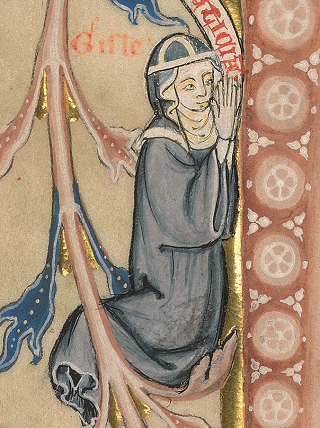
Codex Gisle
Under the Magnifying Glass: Decorated Initials Filled with Miniatures
Codex Gisle
The Golden Gradual of Gisela von Kerssenbrock: The Edition
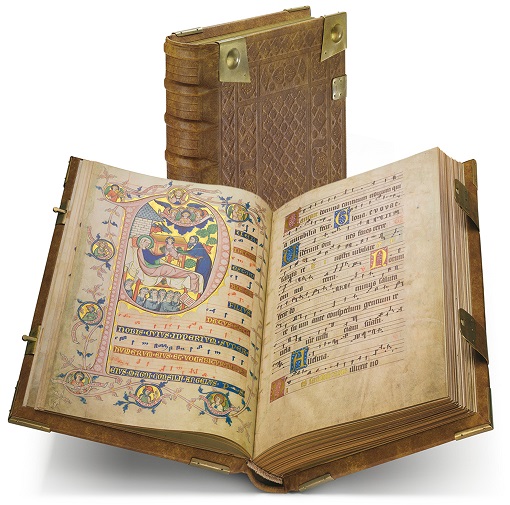
The Manuscript and the Facsimile at a Glance
Both the original and the facsimile of the Golden Gradual of Gisela von Kerssenbrock seem to be bursting with gold and colours.
Manuscript: Osnabrück, Diözesanarchiv, Ma 101
Date of Origin: c. 1300
Place of Origin: Rulle Abbey, Osnabrück
Dimensions: c. 35.5 x 26.0 cm
Extent: 344 pages (172 leaves)
Artists: professional workshop of book illumination in the diocesan city of Osnabrück, Gisela von Kerssenbrock
Patron: Gisela von Kerssenbrock
Illumination: 53 historiated initials, 201 gold initials on a coloured ground, 15 inititals in blue and gold on red fleuronné pen work, decorated medallions, fine foliate sprays, musical notation in colours
Binding: light brown leather, blind-tooled all over, brass corner pieces and clasps (original from the 16th century)
Commentary in 2 volumes for the Facsimile Edition, incl. a CD by Harald Wolter-von dem Knesebeck / Beate Braun-Niehr / Hermann Queckenstedt / Fabian Kolb
Print run: 480 copies
Music from the Golden Gradual of Gisela von Kerssenbrock
Nine chants from the Golden Gradual of Gisela von Kerssenbrock are recorded by the Schola Cantorum of Women of the Youth Choir Osnabrück on 24 November 2014. (The audio sample is the Introitus of the Christmas mass “Puer natus est nobis”.)
Codex Gisle
Enjoy Viewing 10 Sample Pages:
A Glance at the Facsimile
The section of the Golden Gradual of Gisela von Kerssenbrock presented here comprises pages 136 to 145.
These passages refer to Easter and contain the Asperges chants sung at the ceremony of sprinkling holy water during Mass on Easter Sunday, Easter Monday and Easter Tuesday. The relative importance of the various chants is reflected by the hierarchy of the initials, ranging from gold letters with fleuronné pen work or a coloured background, by way of historiated initials of various sizes, up to the sumptuous full-page decorated initials. On each page, 10 to 12 staves are drawn for the musical notation of the corresponding text lines.
Codex Gisle
A Challenging Production: fac simile
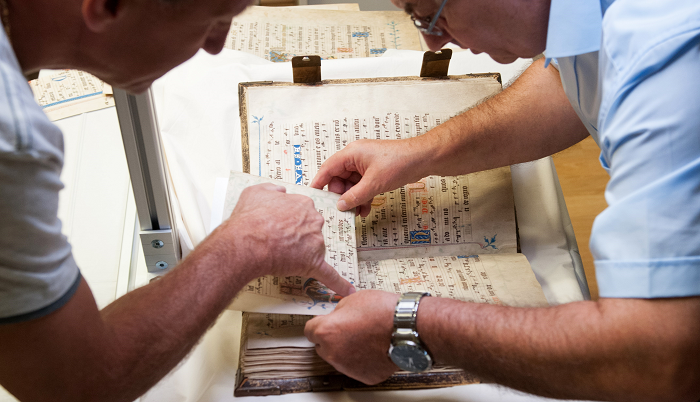
With an Expert Eye
After the digital photography of the Golden Gradual of Gisela von Kerssenbrock has been taken at the Diocesan Archive of Osnabrück, the photographer and the lithographer analyse the digital data taken on the premises. Subsequently, the lithographer prepares the data for the colour and the gold prints. He then compares the printing proofs of each page with the original in the Diocesan Archive. The lithographer looks for the smallest colour discrepancies and corrects them – a process demanding an expert eye and a good deal of experience. Before the limited edition can be printed, many proof runs are necessary until the desired similarity with the original in every detail is achieved.
Craftsmanship at its Best
For the binding of the Golden Gradual of Gisela von Kerssenbrock the bookbinder selects leather sheets of matching colour. Then the leather is thinned to facilitate drawing it over the massive wooden board. Prior to that, the edges of the boards have been beveled. For blind tooling the leather, stamps have to be specially made both for the front and back covers. In order for the nine cords to be raised uniformly, each facsimile is placed in a block press for 24 hours. Subsequently, the book binder uses a fillet to impress fine decorative lines into the spine. He finally fastens the corner pieces and the two clasps to the codex.
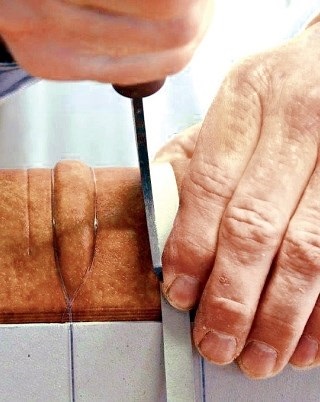
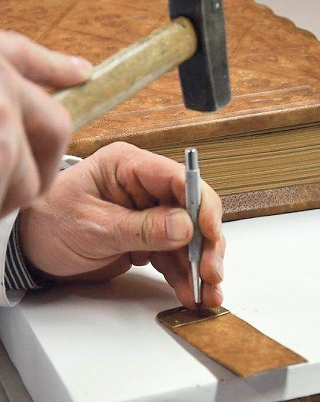
Codex Gisle
The Facsimile Folder for the Edition
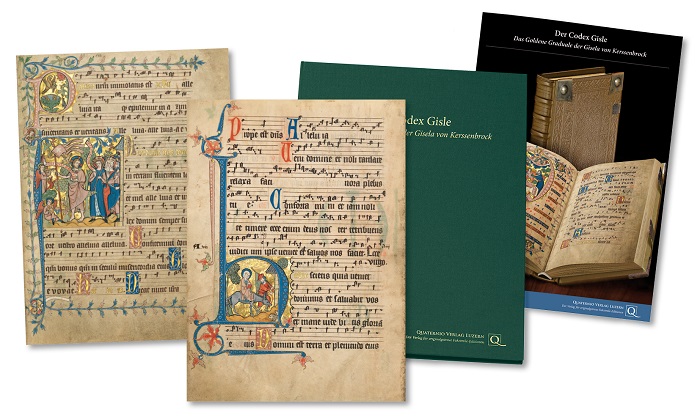
Codex Gisle




